How Much Should I Be Spending on Eggs?
Posted on: April 17th 2019

Eggs are a daily staple in millions of U.S. households, but their pricing remains a mystery to most people. When you stop in front of the neatly lined cartons in the grocery store, perhaps you immediately reach for your preferred brand without considering the others. Many shoppers choose their eggs based on a combination of factors, but often the price has the final say in their selection.
That’s why you may wonder, what determines the cost of an egg? What differences justify one egg costing twice as much as another, and is paying more worth it? Since eggs are a food you regularly put on the table, knowing the facts about pricing leads to smarter decisions for you and your family.
What’s the Average Cost of Eggs?
Egg prices are different all across the country due to fluctuating supply, demand, and other factors. But even within your local grocery store, you’ll see a wide range of prices that make it difficult to pinpoint a meaningful average. The cheapest eggs you’ll find can cost as little as 59 cents at a big-box store while the most discerning connoisseurs are willing to spend upward of $7 for the finest eggs available. Between 2016 and 2018, the average price of a dozen large eggs fluctuated between $1.32 and $2.08.[1][9]
It helps to break down the factors that differentiate each tier of egg prices, so look out for these four common labels when comparing prices.
Cage-Free and Free-Range Eggs
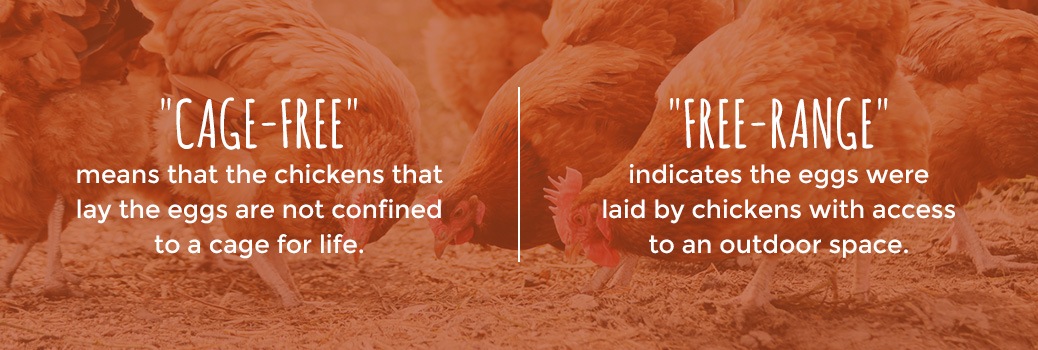
The designation “cage-free” means that the chickens that lay the eggs are not confined to a cage for life. They are housed inside a single building. The difference from other farms is the chickens are allowed to move around a bit more. A label of “free-range” indicates the eggs were laid by chickens with access to an outdoor space.
The quality of cage-free and free-range eggs depends on the farmers. Some brands that market free-range eggs do the bare minimum required to earn the label. Free-range chickens might still be crammed into a few square feet of cement when outside. Or they might have some wiggle room and access to fresh grass, worms, and bugs that improve their quality of life. These eggs usually cost about twice as much as conventional eggs.[2]
Certified Organic Eggs
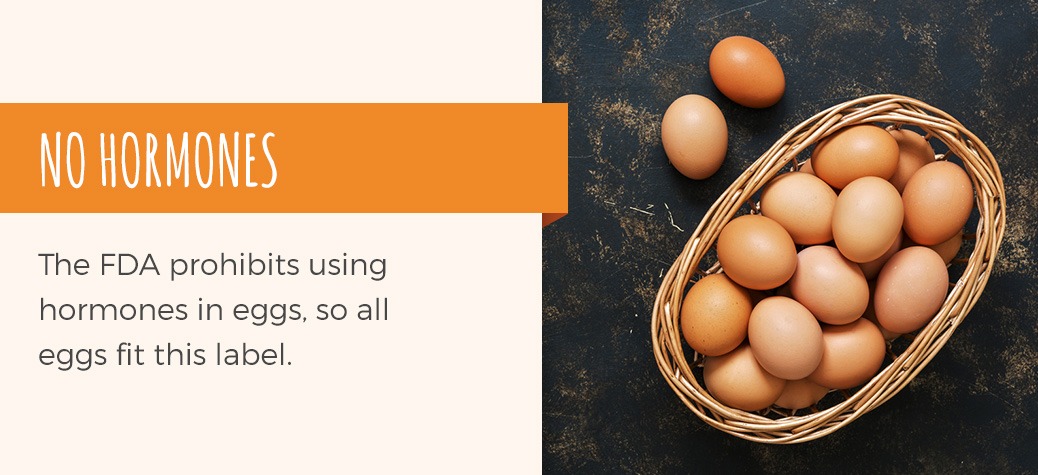
All organic eggs are free-range, but the United States Department of Agriculture (USDA) requires more than that to grant organic certification. These chickens can only consume organic feed, and farmers can’t administer hormones or any other drugs in the production process.
With certified organic eggs, there’s no question chickens and their egg quality benefit from a better environment and higher-quality feed. Organic eggs are significantly more expensive than traditional eggs due to the additional care, resources, and inspections they receive. Expect to pay about four times as much for the quality difference.
Omega-3-Enriched Eggs
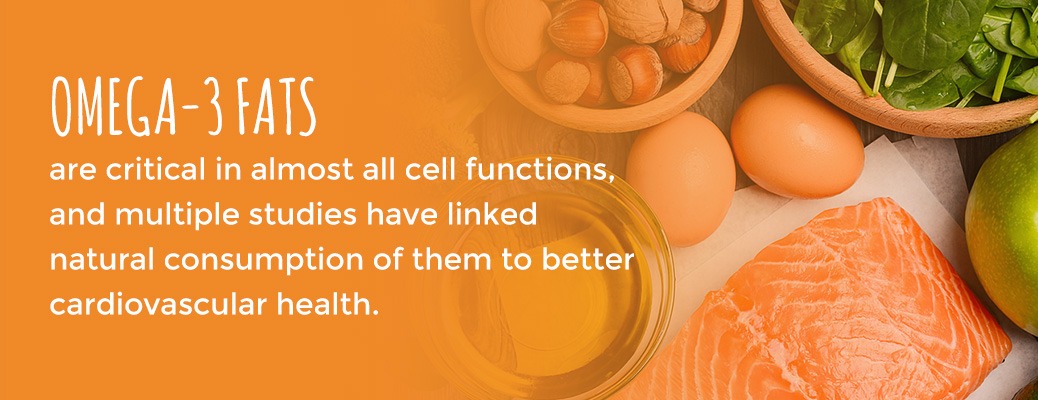
Omega-3s are a group of essential fatty acids that your body can’t make on its own. Omega-3 fats are critical in almost all cell functions, and multiple studies have linked natural consumption of them to better cardiovascular health. Eggs enriched with omega-3 fats are also a good option if you’re watching your cholesterol or preparing meals for someone who needs to keep an eye on their intake. These eggs have less of the bad kind of cholesterol and more of the good variety for a more balanced nutritional profile.
To produce eggs with higher natural levels of omega-3s, farmers feed chickens a diet fortified with flax and other ingredients rich in fatty acids. When you purchase enriched eggs, you get a product with better nutrition — which usually feels like a more concrete justification for shelling out $2 to $3 extra per carton.
Pasture-Raised Eggs
Many shoppers are attracted to the idea of buying eggs laid by happy chickens that are well cared for and allowed to roam around outside. Cage-free and free-range practices do a little bit to improve conditions for egg-laying chickens, but pasture-raised conditions as close to ideal as it gets. To meet American Humane certification standards for pasture-raising, each chicken must have 108 square feet of pasture space to move around in. Pasture-raised chickens also enjoy the benefits of a varied natural diet. They have access to grass, insects, and seeds that produce a richer nutritional profile in the eggs they lay.
These categories often overlap to give you a variety of options at multiple price points. Cage-free and free-range eggs have the smallest price difference when compared to conventional eggs, but if cage-free eggs are also omega-3-enriched, the price will go up accordingly. The most expensive eggs are certified organic, fortified with omega-3, and pasture-raised all at once. With all the work and resources that go into these production methods, the resulting high-quality eggs easily can command a price tag triple or quadruple that of traditional eggs.
Why Are Egg Prices so High?
Depending on when you read this, different factors may be contributing to higher egg cost. Retailers make a difference, too. You might find your store changes its egg prices frequently, or you may only see change a couple of times a year. Many factors govern the cost of eggs, and they sometimes combine in unexpected ways. These are the top outside factors that increase how much you pay per dozen.
1. Weather During Egg Production

Egg prices are highly susceptible to spikes during and after periods of bad weather. With conventional eggs from chickens raised indoors, lousy weather affects the chickens’ feed rather than the chickens themselves. Rain is one of the most common weather events to interfere with egg prices. When heavy rain or flooding impacts crops, the quality and availability of chicken feed goes down while its cost goes up.
For chickens with exposure to the outdoors, severe weather has more of a direct impact. Farmers must take more care to shield chickens from damp conditions when rainfall or flooding occurs, and prevent issues like dehydration in the sweltering heat of summer. The more extreme the weather, the higher egg prices rise.
2. Seasonal Surges in Egg Production
Like any product, eggs see prices fluctuate based on demand. Eggs are cheapest during summer, and prices trend upward starting in fall and continuing through winter, when more people buy eggs. Higher demand equals higher pricing.
These are the months where people start to bundle up and seek out hot, filling meals to counteract the chill in the air. Egg recipes increase in popularity when it’s cold outside. Fall also marks the beginning of school for kids in most areas, so families ramp up their egg consumption to provide hearty breakfasts throughout the semester.
Farmers do not change their flock sizes based on time of year. If farmers grew the size of their flock to match temporary demand, they might run into problems in the summer, when demand is not as high.
3. Retailer Strategy for Selling Eggs
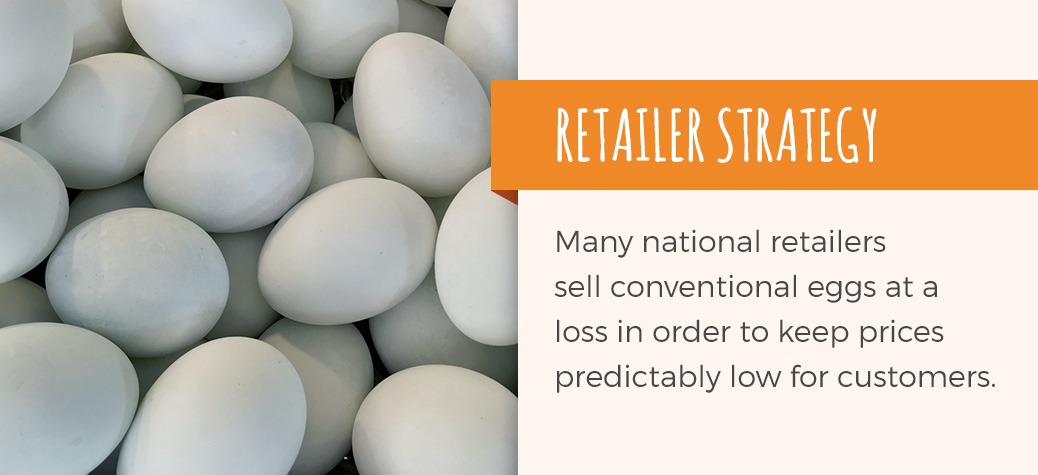
Prices might be much higher at one retailer than another, depending on their egg-selling strategy. Many national retailers sell conventional eggs at a loss in order to keep prices predictably low for customers. They know you’ll come in for a low-priced carton of eggs and just might pick up one or two or several other items on your way to the register. By absorbing the profit loss on conventional eggs, retailers make a profit on the other items you buy.
Selling at a loss works for traditional eggs because they make up most of the market. In 2018, more than 80 percent of eggs were produced conventionally.[3] Since most people buy conventional eggs, selling them at a loss still brings in a huge number of customers. Specialty eggs have a much smaller consumer base, so selling them at a loss doesn’t do much to amplify traffic or sales.
4. Unforeseen Disasters and Egg Pricing
Of course, certain one-time events have more of an impact on egg prices than others. Natural disasters and disease outbreaks do the most to skyrocket the cost of a dozen eggs, as you’ll see from these examples.
Hurricanes Florence and Michael and Egg Pricing
The United States suffered serious losses from natural disasters in 2018, with hurricanes Florence and Michael leaving a swath of destruction in their wake. In addition to the tragic loss of human life and vast damage to property, agricultural production suffered heavily. Georgia, one of the nation’s biggest producers of poultry and eggs combined, lost more than 2 million chickens when nearly 100 poultry houses were destroyed.[4]
North Carolina also ranks high in combined production of poultry and eggs, and suffered even worse losses when Hurricane Florence hit. Farmers in the state lost more than 3.4 million chickens and turkeys,[5] leaving both producers and consumers reeling. Retailers had to find other sources for their eggs, and they passed the combined costs of transportation and decimated supply on to consumers in the area.
Avian Flu and Egg Pricing
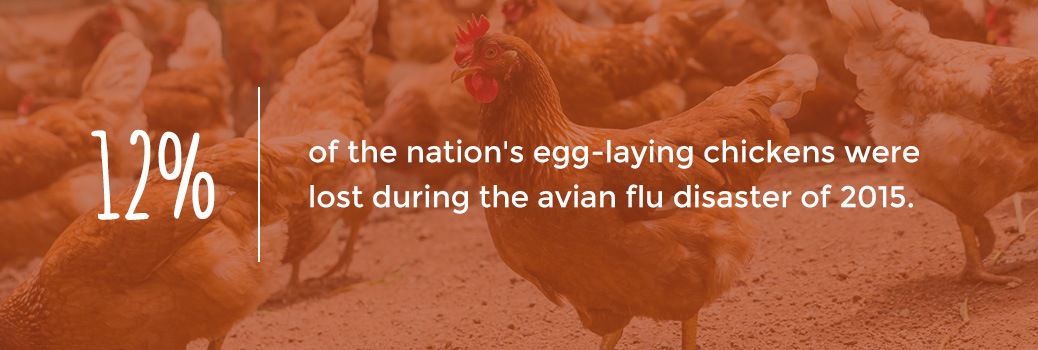
The weather isn’t the only thing that can meddle with the price of eggs. With hundreds or thousands of living creatures in one space, an outbreak of disease can spread like wildfire. The egg industry saw this in full force during the avian flu disaster of 2015.[6] The disease killed more than 50 million chickens and turkeys, with 80 percent of those losses happening from April to May. A full 12 percent of the nation’s egg-laying chickens were lost.[7]
Highly pathogenic avian influenza (HPAI) spread from wild birds to domestic poultry during migration — at a speed farmers could neither predict nor prevent. With such a sudden reduction in supply, the cost of eggs rose dramatically in the second half of 2015. Consumers saw the highest prices in September, when a dozen large white eggs cost almost $3. That was more than a 50 percent increase in price over September 2014.[8]
These egg industry statistics show just how volatile prices become when an unexpected event causes mayhem for farmers. They cannot prevent disasters like these, but the best farmers have measures in place to offset price fluctuations from bad weather and seasonal demand, so consumers get better price stability year-round.
Historical Egg Prices
Have egg prices always fluctuated this much? When are eggs expensive across history? You might be surprised to see how the cost of eggs has evolved over time. Let’s see how much consumers have paid for a dozen in the past.
Egg Prices in the 1930s-’50s
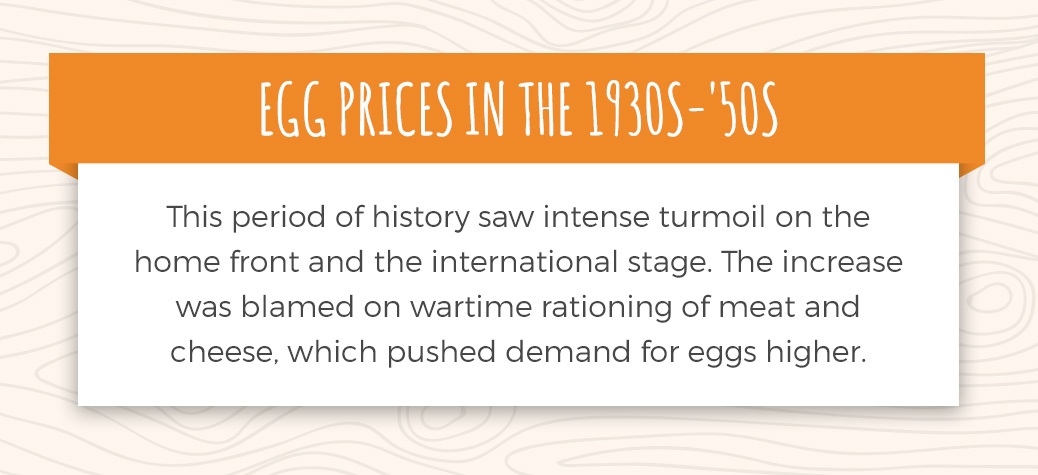
This period of history saw intense turmoil on the home front and the international stage. The Great Depression was in full force through the ’30s, and eggs were a major staple for families who could not afford more expensive food items. By 1937, a dozen large white eggs cost 36 cents. Adjusted for inflation, that would be about $6.40 today. The price dropped to 33 cents by 1940.10
In 1941, Japan bombed Pearl Harbor. This event set off a long period of price increases as World War II demanded resources such as food usually reserved for consumers, pushing up prices at home. The price of eggs that year shot up to 40 cents, and by 1945 a carton of eggs was up to 57 cents. In today’s dollars, that would be a whopping $8.45 per carton.10 The increase was blamed on wartime rationing of meat and cheese, which pushed demand for eggs higher. Prices stayed relatively stable for the next five years.
Egg Prices in the 1950s-’70s
The 1950s brought lower egg prices as the world recovered from the war and the price increases from rationing dissipated slowly. In 1950, eggs cost about 60 cents — less than $6.50 in today’s currency. The ’50s were all about innovations in food. Inventions like the microwave, instant potatoes, TV dinners, and fast food changed the mealtime landscape as Americans had more options to choose from. By 1954, eggs cost 59 cents. As the decade came to a close, consumers paid 53 cents for the average carton of eggs.10
The 1960s were relatively uneventful on the world food stage, but it is worth noting that the last time you could get a dozen eggs for under 50 cents was in 1967. By 1969, a carton cost 62 cents, or $4.36 today.10
Egg Prices in the 1970s-’90s
A recession in 1973 interrupted egg prices’ race to the bottom, with consumers forking over 78 cents per dozen. By 1976, the year of the American bicentennial, prices had jumped to 85 cents per carton.10
By 1980, prices were easing slightly from the ’70s. A dozen eggs would have set you back 84 cents. In 1984, the average price hit $1, the first time eggs had cost an entire dollar, and that stayed fairly steady through the end of the decade.10
Egg Prices in the 1990s to the Present
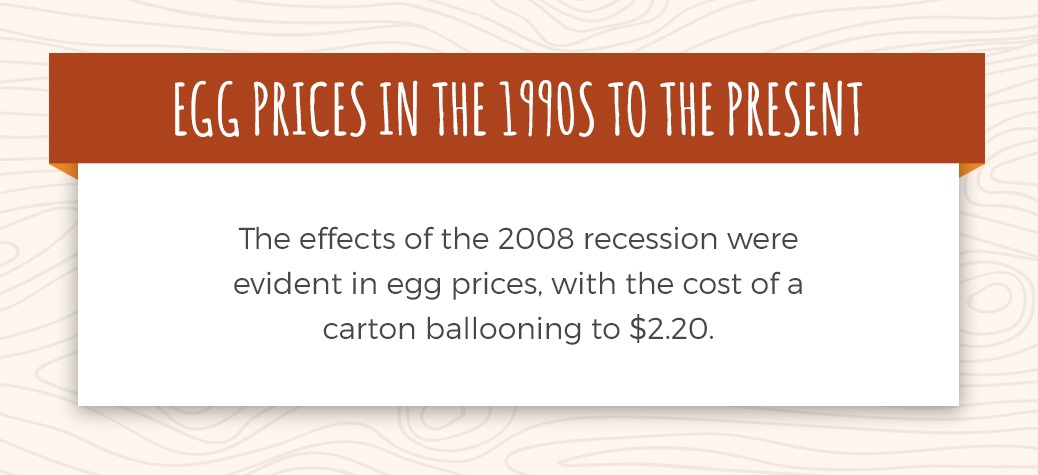
The ’90s were a great decade for egg prices. By 1994, the same year genetically modified crops entered the marketplace, a carton of eggs could be had for just 86 cents. Prices rose to $1.04 in 1998 but quickly dropped back down near the turn of the century.
In 2000, consumers had it good with a dozen eggs running 91 cents. Prices hovered around $1 through 2003, with 2004 seeing a spike to $1.63. The effects of the 2008 recession were evident in egg prices, with the cost of a carton ballooning to $2.20. Following this spike, prices fell below $2 for the next few years but spiked again during the avian flu disaster.[9] Since farmers recovered from the wipe-out and replenished their flocks in 2016, consumers have enjoyed average prices ranging from about $1.35 to just over $2.
Cheap Eggs Vs. Expensive Eggs
Are you thinking about splurging on more costly eggs or making the switch to better-quality eggs for the long term? It’s important to understand what you’re getting in each price range so you can make the most cost-effective choice for the quality you want.
1. Cheap Eggs
The cheapest eggs get the job done but not more than that. Conventional white eggs are the least expensive available, with brown eggs costing slightly more despite no difference in nutritional value. The cost of cage-free eggs have come down enough to place most of them in the “cheap” category if they don’t have any other special traits like a vegetarian diet or omega-3 enrichment.
2. Mid-Range Eggs
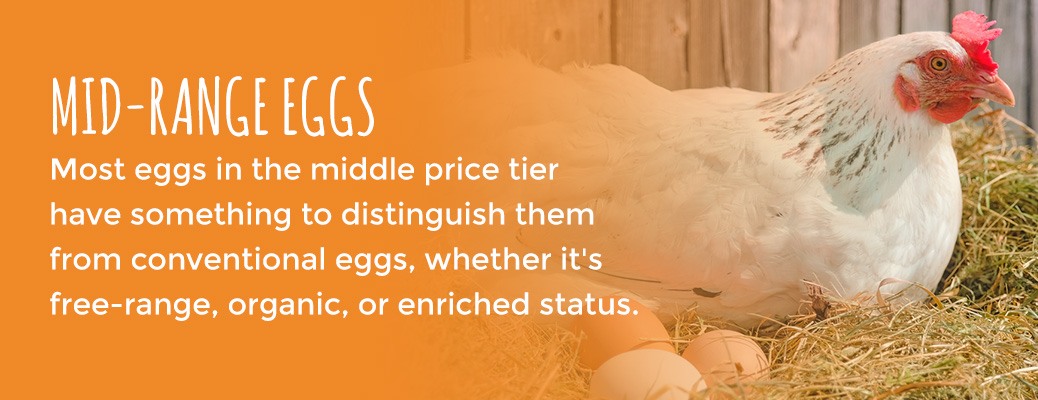
Most eggs in the middle price tier have something to distinguish them from conventional eggs, whether it’s free-range, organic, or enriched status. You may be able to match two or so of your preferred qualities in mid-range eggs, but you do sacrifice some of the more premium identifiers. You won’t have too hard a time finding eggs that are both free-range and omega-3-enriched in the middle price range, but if you want to add certified organic or another qualifier to the list, you’ll likely need to move up to the highest price bracket.
3. Expensive Eggs
If only the best flavor and nutrition will do, the more expensive eggs can be the way to go. At the highest price tier, chickens generally have the most space to roam and the best diets possible. With eggs, you can have no doubt you get out what you put in. If animal welfare is a main factor in your egg choice, spending more on pasture-raised eggs will generally grant you more peace of mind.
Are Cheap Eggs Bad for You?
There are no negative health impacts of buying cheap eggs. They don’t have as rich a nutritional makeup as their more expensive counterparts, but all the important vitamins and minerals are there. What really makes the difference is where you get those cheap eggs from.
For those who care about nutrition and the environment, more expensive eggs are the better choice. You can lower your carbon footprint and improve what you put in your body by purchasing more expensive eggs. So while cheap eggs are not bad for you, more expensive ones are better, especially for the chickens producing your eggs.
Choose Sauder Eggs for Exceptional Quality
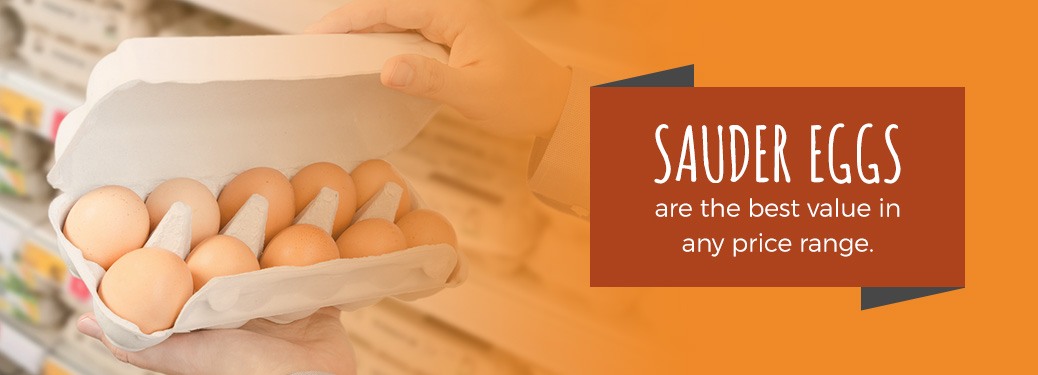
Many farms and producers of eggs don’t care much about how their hens are raised as long as they hit their quotas. The best farms, on the other hand, understand that proper hen husbandry is the secret to the best quality eggs — whether they’re produced conventionally or by other methods.
Sauder Eggs has been setting the standard in animal care and egg production since Frank Sauder started the business in the 1930s. Our farmers are an extension of our family, and work hard to maintain our exacting requirements for the very best eggs. Many still gather eggs by hand every morning, and those eggs are thoroughly inspected for safety and quality before they make it to you. Each and every person who works with chickens receives comprehensive training and signs a code of conduct to ensure our animals get proper care and handling.
Our hens eat a carefully balanced feed blend with zero added hormones, and they always have access to fresh air and a clean water source. We worry about the hens’ health so you don’t have to. The price of eggs always will experience ups and downs, but our quality will never waver. Our eggs are the best value in any price range, so visit our store locator and find us in your local egg aisle to enjoy healthy, high-quality eggs.
